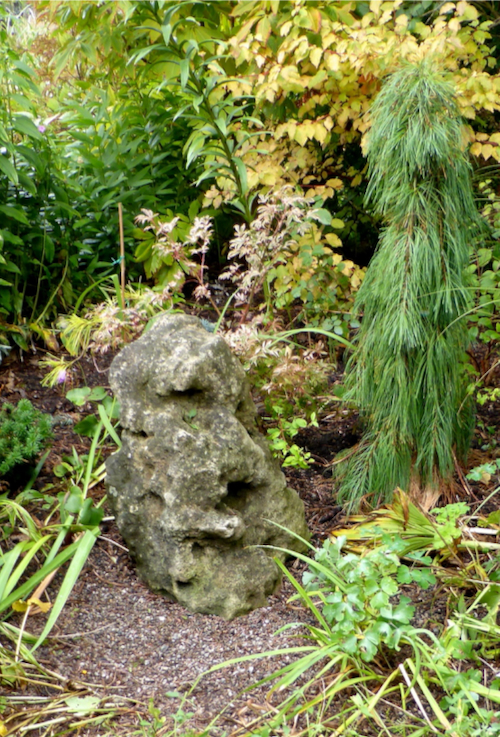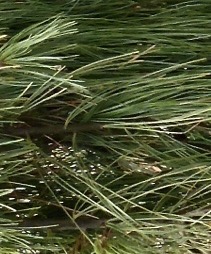Pinus strobus ‘Angel Falls’

GENERAL INFORMATION: Do your research before you buy a wonderful plant! Pinus strobus ‘Angel Falls’ hates air pollution, alkaline soils and any shade. I tried to grow one twice. It was next to a bus route in Toronto, in alkaline soil, mostly in full sun (but not in winter.) Both died. Being a native cultivar did not help! Normal sized Eastern White Pine is the provincial tree of Ontario. In the past, trunks were used for British sailing ships.
Common Name: Angel Falls weeping white pine.
Life Cycle: Dwarf evergreen coniferous tree.

Pinus strobus ‘Angel Falls’ growing in East York.
Height: 3 m, width 1.2 m.
Leaves: Long, light green needles, in bunches of 5.

Pinus strobus ‘Angel Falls’ needles.
Cones: are from 10 - 20 cm long and 3 cm wide, with winged seeds. These will not produce an identical tree.
Range: Pinus strobus is native to Eastern North America, west to Manitoba, south to Georgia.
Habitat: Grows best on moist, sandy loam, forest edges, forests, swamps, woodlands.
CULTIVATION:
Plant: in a sheltered position, allowing space for spread.
Light: Full sun. Hates shade.
Soil: Slightly acidic, sandy loamy soil.
Water: Well drained. Intolerant of road salt.
USDA Hardiness: Zone 3.
Pests and Diseases: Root rot in poorly drained soil.
Companion planting: Best as a specimen tree.
Propagation: From cuttings.
References:
https://www.ontario.ca/page/eastern-white-pine
https://gobotany.nativeplanttrust.org/species/pinus/strobus/
Text and images supplied by Anna Leggatt
